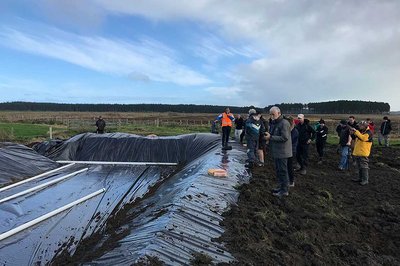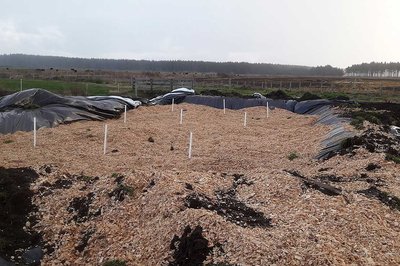
Associate Professor Ranvir Singh.
Massey University scientists, a group of Rangitikei farmers and AgFirst are exploring cost-effective technologies to limit nitrogen losses from farms with artificial drainage.
The Massey Fertilizer and Lime Research Center (FLRC) led, Innovative Drainage Management Technologies, is now in its second year exploring ways to reduce nitrogen leaching losses from farm production systems. It is also looking to increase water availability in the soil profile in summer and recycle drainage water as an irrigation source in a cost-effective manner.
The project is testing technologies to manage artificial drainage at two irrigated properties in coastal Rangitikei sand country, where surface drainage is often required to maintain groundwater levels below the root zone, particularly during the wet season, and irrigation is often required to supply sufficient soil water for plant growth in the summer months.
Project co-lead, Associate Professor Ranvir Singh, says artificial drainage systems provide an important function in poorly drained or very shallow groundwater areas.
“In some situations, this drainage can have an adverse impact on nitrogen leaching losses. But there are technologies that can help control and treat drainage waters, allowing more nitrogen to be removed, such as controlled drainage, woodchip bioreactors, and drainage water recycling. These aren’t new technologies, but their use and effectiveness have been understudied in New Zealand soils. We wanted to test these technologies together in different environments, soil types and seasons, to see how they work on the farm.”

Allowing denitrification to occur
“Subsurface denitrification is a process in which nitrate converts into gases, predominantly as dinitrogen, a harmless gas,” Dr Singh says. “The issue with artificial drainage is that water and nitrate spends less time in the subsurface environment before entering waterways. This changes nitrate flow time and pathways, limiting opportunity for subsurface denitrification to occur, and therefore greater nitrogen leaching losses.
“We can increase soil water and the time for subsurface denitrification to occur by managing the water table height by controlling drainage rate in the surface drain. This process is spatially variable across landscapes and we need to appreciate the important role that subsurface denitrification can play in some groundwater systems, like those on the case study farms,” he says.
“When a lower water table is required, we can pass the drain water through a wood-chip bioreactor to help the denitrification process.”
Denitrification bioreactors are simple trenches filled with wood chips such as pine. When water is passed through them, the organisms that carry out denitrification are able to feed upon the woodchips.
“While they do this, they are also using the nitrate and releasing it out as nitrogen gas,” Dr Singh says. “So again, more nitrate is removed in drainage water before it leaves the farm and enters waterways. Woodchip bioreactors are proven, cost-effective, they don’t negatively affect drainage and require very little maintenance over their long life. What we learn from these case study farms will guide us on how these systems can be applied elsewhere.”

Making a difference in and above the soil
Project co-lead Associate Professor David Horne says nutrient management and limiting the impacts on water quality are critical issues in agriculture, but most of the attention is based on how to make a difference in and above the soil.
“If we can help farmers reduce the impact of their farms on surface water quality and help conserve drainage waters for use as irrigation, we can reduce the demand on ground and surface water sources, while improving their quality.”
A field day took place on July 18 on one of the case study farms in coastal Rangitikei sand country. Participants learnt about progress with the project to date, how the drainage control structures are working within a farm system, as well as seeing a woodchip bioreactor under construction and hearing about the potential use of a water-harvesting scheme.
The project will continue over the next two years, monitoring and assessing performance of these novel in-field and edge-of-field technologies to limit nitrogen losses in artificial drainage and to improve water use on farms. You can follow progress on the project Facebook page.
The project is supported by ACRE (Agricultural Communities Respecting the Environment), Waitatapia Farming, Hyde Park farming, Ravensdown, and the Ministry for Primary Industries Sustainable Farming Fund.